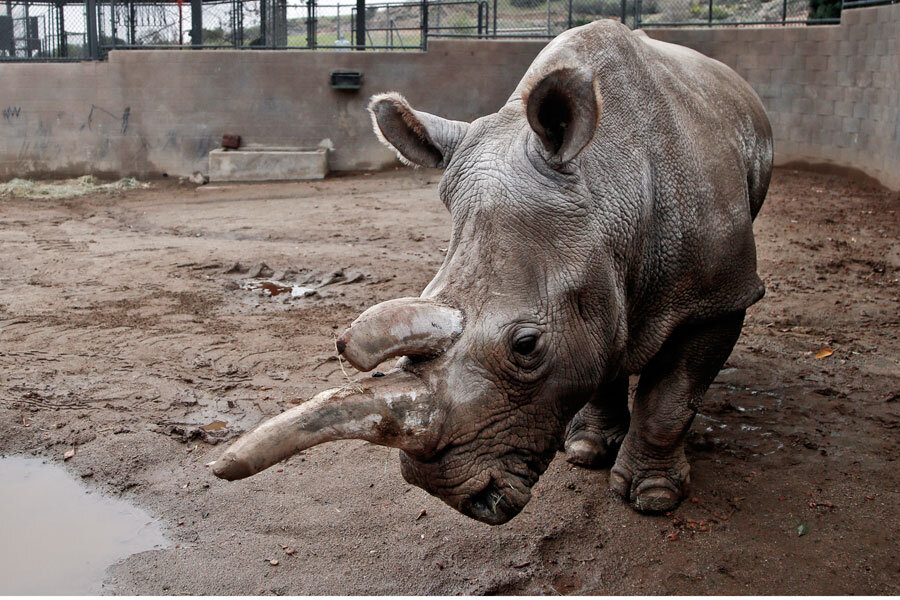Only three northern white rhinos left. Can we save the rhinos?
Loading...
One of four northern white rhinoceroses left on Earth was euthanized Sunday at her home at the San Diego Zoo Safari Park, said the zoo officials on Facebook.
Nola, a 41-year-old, 4,000-pound rhino, was first brought to the San Diego park in 1989, after being captured from the wild in Sudan at the age of two and spending time at a Czech zoo.
Northern white rhinos were declared extinct in the wild in 2008, primarily because of poaching. Now the three remaining rhinos live in captivity at the Ol Pejeta Conservancy in Kenya.
There are about 20,400 southern white rhinos and 5,000 black rhinos living in Africa, and between 50 and 60 Javan rhinos living in Southeast Asia, the Save the Rhino conservation group reports.
As awareness increases and technology improves, several steps have been taken to end poaching of both elephants and rhinos.
A team of researchers from King’s College London, University College London and London’s Metropolitan Police has come up with a fingerprint powder that can retrieve poachers’ fingerprints from elephant tusks, The Christian Science Monitor reported earlier this month.
And this March, the Tanzanian government launched an anti-poaching operation dubbed Spidernet that resulted in a number of arrests of wildlife poachers, including Ms. Yang Feng Glan, a Chinese restaurateur in Tanzania who is accused of leading one of Africa’s biggest ivory-smuggling rings, The Monitor reported.
The Black Mamba Anti-Poaching Unit, a 26-member South African ranger group composed mostly of women, accepted the United Nations’ top environmental award in September, the Champions of the Earth Award, for fighting illegal wildlife trade at the community level.
“In my community, a lot of people kill wild animals, [and] I said to myself, enough is enough,” Collet Ngobeni, a member of the Black Mambas, told The Monitor. “I have to stand up, [and] teach people how important nature is, because of the love of nature that I have.
But the success of the Black Mambas calls attention to the need for more local action against the economic incentives of poaching, and simultaneous local support for the intrinsic value of substantial rhino populations. Because regardless of international poaching success, local poachers have consistently valued economic opportunity over rhino viability.
“The scarcity of rhinos today and the corresponding intermittent availability of rhino horn only drives the price higher, and intensifies the pressure on the declining rhino populations,” the Save the Rhino group explains. “For people whose annual income is often far below the subsistence level, the opportunity to change one’s life by killing an animal that they don’t value is overwhelming.”
Some experts say the best way to end poaching is to offer other economic opportunities for locals. For example, the tusk of a single elephant can weight up to 250 pounds, and one pound of ivory on the black market can yield $1,500 – more than three times the annual income in the Democratic Republic of Congo, a life-changing opportunity.
“The white rhinos represent the wild places and prehistoric animals that are still with us,” Steve Metzler, interim associate curator of mammals at the San Diego Zoo, told the San Diego-Union Tribune. “It is devastating to think that in just a few hundred years, we can wipe that out. That is just wrong, and we need to do something about it.”






